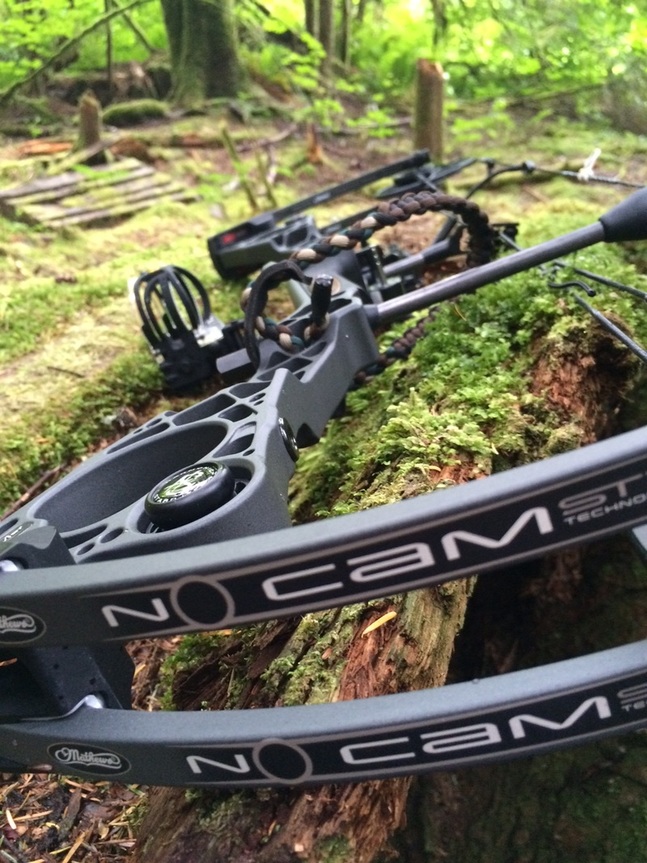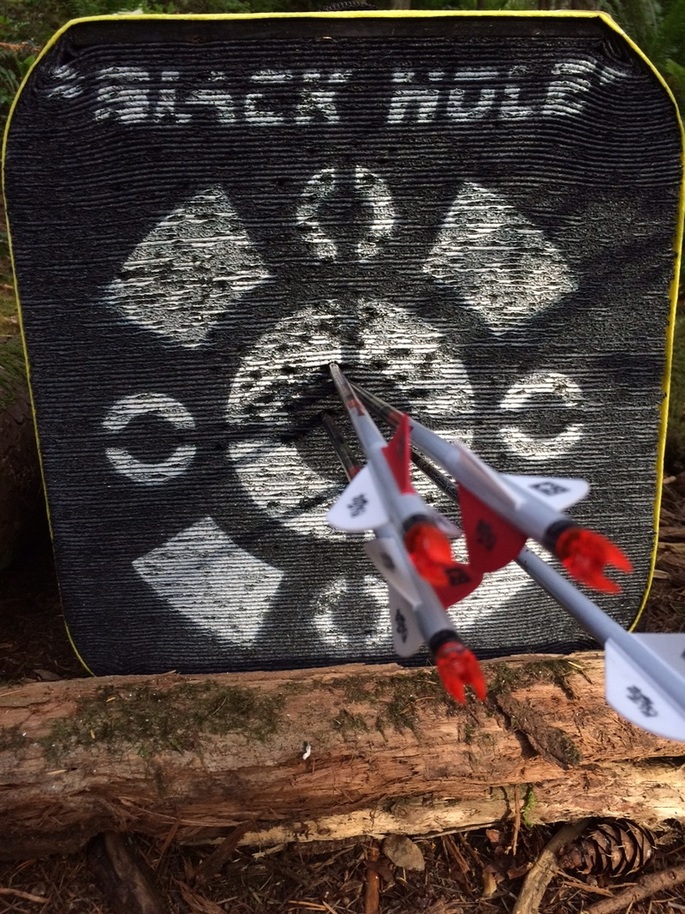I have to admit, I’m a bit of a speed freak. Whether we’re talking cars or calibers I’ve always held the opinion that faster equals better. It was with this bias that I purchased a new compound bow from one of the “speed bow” manufacturers a few years ago. Wowed by impressive FPS numbers, I was salivating at the chance to take animals out past 50 yards and was wrongly convinced that a faster arrow directly correlated to a more lethal projectile. I’d bowhunted whitetails throughout my teens but it had been more than a decade since I’d picked up archery equipment and the old Bear 45 lb draw hand me down I’d used in my whitetail days seemed like a slingshot by comparison. I easily fell prey to the speed focused marketing efforts of a few of the newer players in the compound industry and walked out of the store with my mean looking, parallel limbed, “ready to kill” package, already envisioning 50 yard plus pass throughs on the moose and elk I had plans to hunt that fall.
Little did I know I was in for one of the most frustrating shooting experiences of my life and an experience that almost had me convinced that bowhunting was something I was going to have forgo until I had considerably more time on my hands.
From day one I fought that damned thing. It just wasn’t “quiet” in my hand, was an absolute bitch to hold at full draw due to a less than solid back wall, and would so easily creep on me that I had to be very careful about misfiring as I fatigued. I constantly found myself checking and re-checking my anchor, the sight level and my pin placement all while fighting to keep the bow out of its incredibly narrow valley. To me the allure of archery equipment had always been a more intimate hunting and shooting experience and this was far from what I was experiencing. Despite regular practice I could not get my groups to an acceptable, consistent level of performance beyond 30 yards, and on a bad day, my 30 yard groups were far from ethically acceptable for any responsible hunter. I assumed I just needed more practice, so I kept shooting and shooting, more and more as our Northern BC moose and elk hunt loomed. Over the course of a couple months I managed to get confident in my ability to consistently hit the kill zone on a moose sized animal out to 30 yards, but given the size of a moose’s lungs, that sure wasn’t accuracy to write home about. I was used to regularly shooting cloverleaf groups with my rifles and I was frustrated as hell that my accuracy with archery equipment wasn’t even close to comparable. Although it had been years since I’d shot archery tackle I did not remember it being this difficult.
The hunt turned out to be unsuccessful so I put the bow down for a couple of months before dusting off the cobwebs in preparation for spring bear, only to repeat the same frustrating process. Again, despite hours of practice my groups were abysmal and worse, even more inconsistent than they’d been in the fall and I eventually gave up on the hopes of taking my first archery bear and opted instead to head out with my rifle in hand. With a child on the way, I knew my ability to practice consistently was going to become even more limited so I sold the bow, thankful to unload it and assumed I would simply have to revisit archery equipment at some point in the distant future.
But I just couldn’t shake the bowhunting bug. And the desire to chase bears and moose in particular with archery equipment grew stronger and stronger as the months wore on. Through my work with the Journal, I’d opened up lines of communication with Mathews and it was with kid on Christmas Eve levels of excitement that I awaited the arrival of my new 70 lb draw No Cam HTR in Stone Tactical. This time I’d done my research, and decided to focus less on FPS numbers, even though the No Cam can certainly hold its own in this regard, and instead emphasize the most important “metric” for any hunter no matter the weapon: shootability.

My plan was to pick up where I’d left off with the previous bow and head into the mountains for a spring black bear hunt with the goal of taking my first archery bear. The timelines would be tight but if everything went well, I’d have my No Cam ready to hunt with time to spare before my planned trip in early June. I should have known better. When it comes to timeliness Canada Customs is not exactly known for its dependability and my bow was delayed at the border and by the time it arrived I only had a month to get it set-up, and practice sufficiently to feel comfortable taking it afield. There was no question I was under the gun, or in this case the bow. It took another week to get all the accessories dialed and I was finally ready to hit the woods for some practice.
By this point, I’d already watched countless video reviews and read more than a few No Cam articles and although they’d all been very positive I was still a little scarred from my previous experience. Maybe the previous bow wasn’t the problem, maybe it was the shooter? What if I just couldn’t shoot a bow like I used to? So it was with a slight bit of unease that I drew back and settled in for my first few shots.
First and foremost, the “fight” from before was virtually non-existent. The draw cycle was incredibly smooth, and I instantly felt that intimate, “shootable” connection I think we all search for in a hunting weapon. The bow just sort of settled where it felt like it should and I immediately had a clear, steady sight picture to work with. No worries about the sight level, no battling for control with my front hand and arm, no undesired near-releases from the slightest variation in my back tension. It just felt solid and more importantly deadly accurate. It was the same feeling I get when I bring my tried and true Sako to my shoulder, a rifle I’ve been shooting since I was 16. It was as close to instinctive as you can get from a refined piece of machined engineering.
Within 2 weeks, my 20 yard groups had my arrows touching consistently and my 30 yards groups just barely outside this same level of accuracy. Was I consistently perfect? Far from, but there was no question that until I started to fatigue, in less than 3 weeks I’d achieved a consistent level of accuracy that I couldn’t in months of practice with the previous bow. The No Cam was everything I’d hoped for and more.
Typical 30 Yard Group With Just A Couple Weeks of Practice
The bear hunt turned out to be uneventful, the weather was far hotter than average for this time of year in BC and I didn’t even see a bear let alone get an opportunity. A legitimate surprise given we’ve hunted this area every year for a few years and have always seen multiple bears and have yet to come home without a tag or two filled. But I never consider a weekend in the mountains with good friends, in great country time wasted. This is hunting after all, not killing.
So if you’re in the market for a new bow, I can honestly and whole-heartedly recommend the No Cam. Even if you’re not, the video that explains this new piece of engineering is worth the watch. Is it the bow for everyone? Of course not, but is it an incredibly shootable, accurate, smooth drawing bow? You bet. And if you’re someone like me, with a family and a limited amount of time to practice on top of all the other planning and preparation that goes into your mountain hunts and you need your equipment to perform at a level without compromise the Mathews No Cam sure doesn’t disappoint. Stay tuned for more posts and field reports on the No Cam and my upcoming Grizzly Stik 650 Challenge!
Adam Janke
Editor in Chief
“Feel The Future” | Mathews NO CAM™ from Mathews Inc on Vimeo.
[button color=”yellow” size=”big” alignment=”center” rel=”follow” openin=”samewindow” url=”/subscribe/”]Subscribe For Free[/button]


